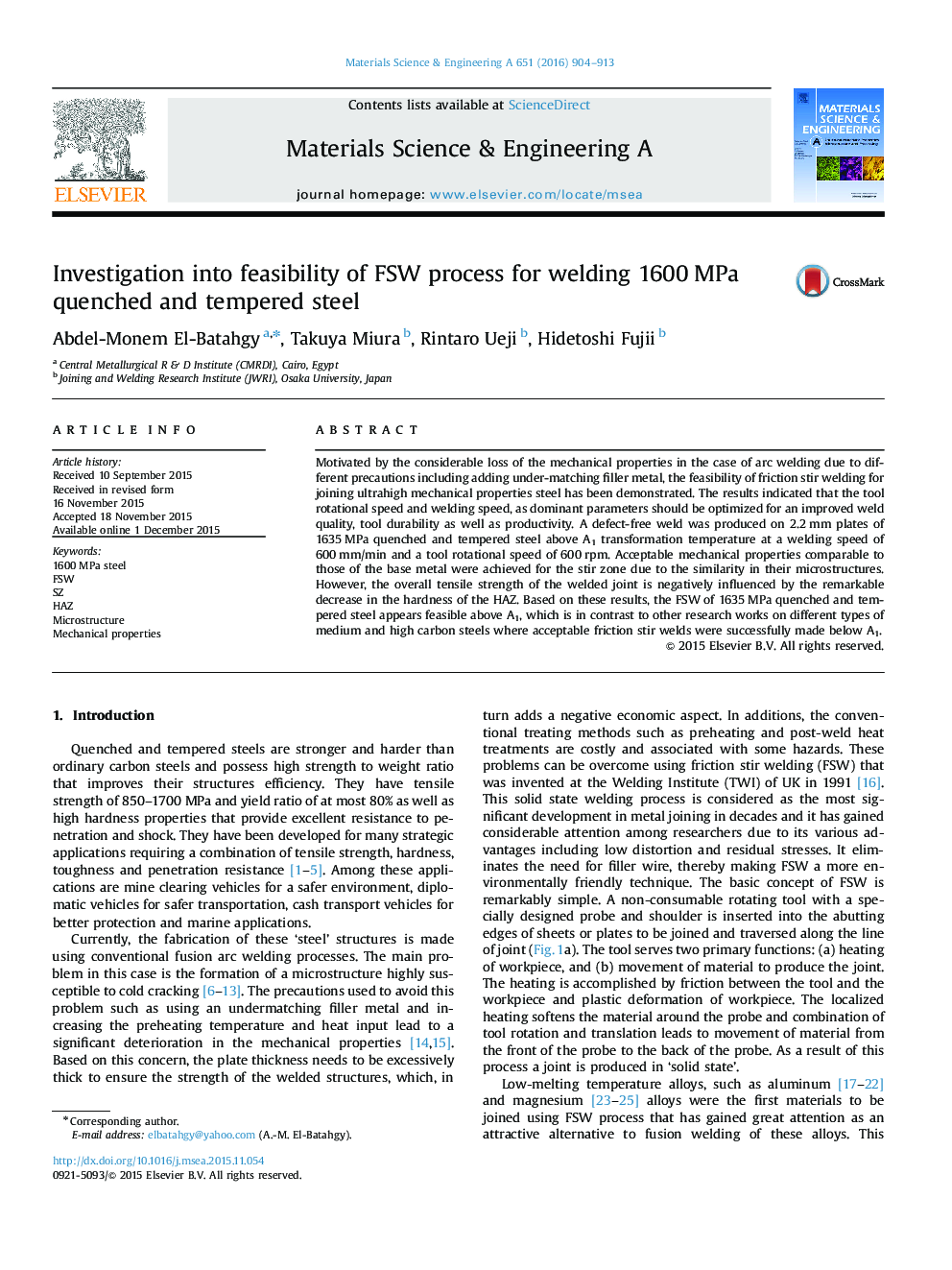| Article ID | Journal | Published Year | Pages | File Type |
|---|---|---|---|---|
| 7976340 | Materials Science and Engineering: A | 2016 | 10 Pages |
Abstract
Motivated by the considerable loss of the mechanical properties in the case of arc welding due to different precautions including adding under-matching filler metal, the feasibility of friction stir welding for joining ultrahigh mechanical properties steel has been demonstrated. The results indicated that the tool rotational speed and welding speed, as dominant parameters should be optimized for an improved weld quality, tool durability as well as productivity. A defect-free weld was produced on 2.2Â mm plates of 1635Â MPa quenched and tempered steel above A1 transformation temperature at a welding speed of 600Â mm/min and a tool rotational speed of 600Â rpm. Acceptable mechanical properties comparable to those of the base metal were achieved for the stir zone due to the similarity in their microstructures. However, the overall tensile strength of the welded joint is negatively influenced by the remarkable decrease in the hardness of the HAZ. Based on these results, the FSW of 1635Â MPa quenched and tempered steel appears feasible above A1, which is in contrast to other research works on different types of medium and high carbon steels where acceptable friction stir welds were successfully made below A1.
Related Topics
Physical Sciences and Engineering
Materials Science
Materials Science (General)
Authors
Abdel-Monem El-Batahgy, Takuya Miura, Rintaro Ueji, Hidetoshi Fujii,
